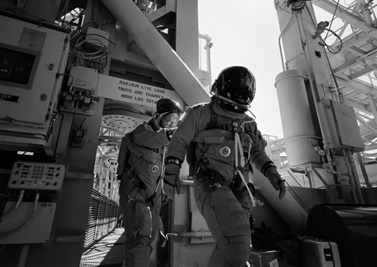After nearly thirty years of flight, NASA’s Space Shuttle Program ended last July, when the Space Shuttle Atlantis landed at the Kennedy Space Center for the final time. With no plan for a new space vehicle, this meant the end of a national manned spaceflight program in the United States.
The space race may have been labeled a competition with the Soviet Union, but its lasting implications were much broader. It inspired a generation of scientists, engineers and innovators. For today, a rallying focus such as this has yet to be found. It could be a search for energy independence or countless other national issues. But one thing is clear: our penchant for discovery has shifted away from interplanetary wanderings.
I have been photographing the end of this era of spaceflight for the last three years, following major events as well as the processing and maintenance of the orbiters. In a way, I was born into this story. My father has been fascinated with spaceflight for his entire adult life; he has only missed two of the 135 shuttle launches. Photographing the launches with him has become as much of a ritual as the launches themselves.
